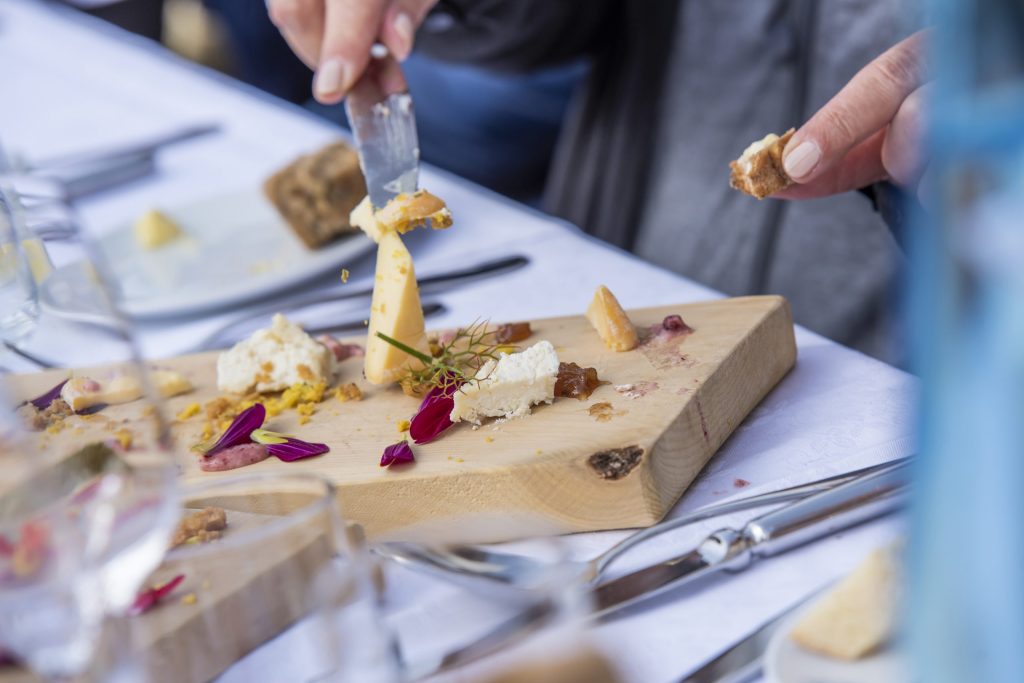Alto Adige The Home of Speck
April 1, 2019 | 4 min to read
In the serene region of Trentino-Alto Adige, also known as South Tyrol, diverse cultures and languages converge amid stunning Alpine landscapes. Historically significant during World War I, the region was annexed by Italy in 1918, leading to a rich cultural fusion exemplified by its local cuisine. Notably, Speck Alto Adige PGI is a unique dry-cured ham, differing from prosciutto, made using a meticulous five-step process that emphasizes quality and local traditions, allowing it to be enjoyed in various culinary applications.

Located in Northern Italy, Trentino-Alto Adige or as it is also called, South Tyrol, is a peaceful autonomous region of Italy sharing the border of Switzerland and Austria. Its past is a series of changing borders, cultural diversity and raging wars. Sitting on the south side of the Alps and Dolomite Mountains, the terrain is beautiful and mountainous.
During the First World War, the area was the scene of some major battles and considered a key, strategic location. After the collapse of the Austro-Hungarian war, Italian troops occupied the area, and it was later annexed as part of Italy in 1918.
The result is a complex mix of cultures. A number of languages are spoken in this area, including Italian, German, Ladin, Mòcheno and Cimbrian. The last two are old Bavarian dialects. After the Roman Empire, centuries before, integrated the Alps, the local Rhaetian people adopted Ladin as their language. Isolated, they developed their own cultural identity.
The area is a unique, autonomous area of Italy with a cuisine more typical of Germany and Switzerland. Here, you’ll find knuddels (bread dumplings), apple strudel, dark gravies, local cheeses, fine wines and, of course, the famous Speck Alto Adige PGI.
Speck Alto Adige PGI
Is it any surprise that Speck Alto Adige is a mixture of Mediterranean and Northern European cultures? Between ancient and modern times, Alto Adige has been a diversified mixture of many cultural identities.
Speck Alto Adige should not be confused with the German speck. On the contrary, Speck Alto Adige is unique. Made from the thighs of specially-raised pigs, the meat must meet specific standards. Speck is smoked, but it should never be confused with prosciutto from Italy.
The process combines preservation techniques from the Mediterranean and Northern Europe. From the Mediterranean, the hams are dry-cured using salt and aged in the mountain winds. From Northern Europe comes the method of salting, smoking and seasoning with local herbs and spices. The result is a dry-cured ham best described as “a little salt, a little smoke and lots of fresh mountain air.”
When it comes to the spices, every producer has their own recipe, often closely guarded for generations. The actual production includes five separate processes.
Step one is the selection of the raw material. The pigs are fed a specific diet, and speck is made from lean, full meat thighs that have passed through a careful inspection. The meat must not be frozen or imported from another region.
Each ham will be marked with its own identification number indicating the beginning of the production process. This assures the ham will be properly aged, and no shortcuts are taken.
Step two is the seasoning of the hams. The salt and pepper mixture remains the same for all, but each producer adds its own carefully-guarded recipe that includes its own mixture of spices. Typically, juniper berries, rosemary, oregano and bay leaves are used, but garlic, coriander or cumin may also be added. This gives the ham its characteristic fragrant aroma.
Before the smoking process, the thighs will be allowed to marinate for up to three weeks in cold rooms. During this period, the hams will be turned, and the marinade will penetrate. At the end, salt must not be more than 5 percent of weight. This is the process that will distinguish producer from producer. This will be the mark of distinction.
Step three occurs after the curing. The hams will be smoked in a traditional manner using a little smoke and lots of fresh air. The process will alternate between smoking and air-drying.
Beach wood is the typical wood used, and it is a cold smoke process. If the temperature gets too high, the pores of the ham will close, not allowing the smoke to penetrate.
Step four is when the hams will rest. This long and slow curing process allows the hams to mature and develop a mild, sweet taste. As in the past, the cellars of South Tyrolean farms are well ventilated with mountain air, fresh and clean. The time to maturity averages about 22 weeks.
An edible layer of mold will develop on the rind, preventing the ham from drying out too much. Once the hams are finished aging, the mold layer will be washed off prior to packaging. It is this layer of mold that allows the aging to be even. It balances out the intense flavors and aromas.
Step five is the stringent quality checks that assure Speck Alto Adige PGI delivers on its promise of high quality and satisfied consumers. Auditors have access to every step in the process and check on everything from the fat to lean ratio, the salt content, fragrance and flavor.
Eating Well
Keep in mind, this is not prosciutto. It is uniquely Speck Alto Adige PGI. It may be eaten in paper-thin slices, but traditionally it is cut by hand into thicker slices. Do not cut off the fat, as it is meant to be eaten. Many people, however, prefer to cut off the crust, as it may be strong and aromatic.
Speck can be served as a snack by itself or with fruit, such as apples and pears, or with cheese. A perfect pairing is Asiago from nearby Trentino, although any alpine- style cow’s milk cheese will do.Speck is also used in cooking,
such as chopped and incorporated into dumplings. DB
5 of 7 article in DeliBusiness Apr/May 2019

